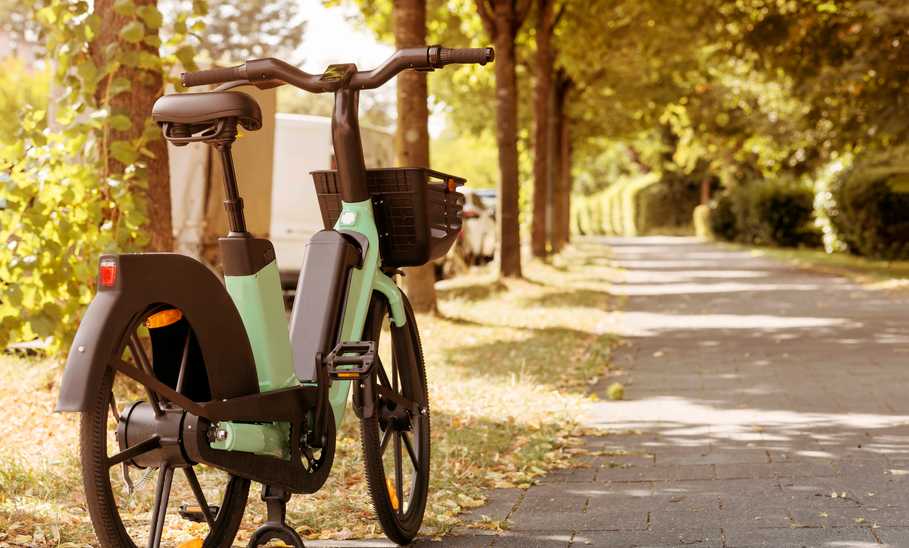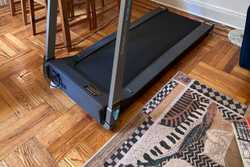What is an Electric Bike? A Simple Guide to the World of Motorized Bicycles

Our evaluations and opinions are not influenced by our advertising relationships, but we may earn a commission from our partners’ links. This content is created by TIME Stamped, under TIME’s direction and produced in accordance with TIME’s editorial guidelines and overseen by TIME’s editorial staff. Learn more about it.
Electric bikes are taking over roads, bike paths, mountain trails, and seemingly everything in between, all over the country. Few transportation innovations have had the explosive growth and sticking power that electric bikes have in the past few years. But, an overwhelming number of new electric bike models flooded the market alongside the uptick in demand, and finding the right one for your needs can be confusing and tiresome. Fortunately, e-bikes aren’t too much more complex than their traditional counterparts. In fact, because all e-bikes must have some form of pedal, they share much more in common with regular bikes than they do mopeds, motorcycles or dirt bikes. Once you can sift through the technical jargon, finding the right bike is actually a pretty fun process.
Electric bikes typically rely on an internally housed motor placed on the center of the frame (also called mid-drive motors), or on the front or rear hubs to assist in turning the wheels. Bikes with hub-mounted motors have their wheels turned directly by the front or rear motor, which has an enclosed drivetrain that directly receives power and turns the wheel. E-bikes with mid-drive motors, on the other hand, send power directly to a crankset that then distributes it to the wheels for assistance. In both motor setups, the power is supplied by the onboard battery.
What separates electric bikes, even those with throttles, from motorcycles and other powered forms of two-wheeled transport is that they typically contain a torque sensor that measures your pedal force, so that the motor matches it instead of overtaking it. Although purely throttle-powered models may not contain onboard sensors for power matching, most Class 1 and Class 2 e-bikes do. The aim of a high quality e-bike is to enhance your biking experience, expand the terrain you can cover, and make riding more fun without sacrificing the exercise.
Just like a regular bike, you can simply pedal along on your e-bike without any help from the motor if you choose. In this case, you operate the e-bike the same way you would a normal bike.
This is one of the most popular methods of riding an e-bike. Pedal-assist operation allows you to leverage the battery-powered motor as well as your body to go farther, without exhausting yourself. Depending on what bike you get, you may be able to switch between different levels of assistance for terrain changes, or if you get tired.
Riding in electric-only mode doesn’t require any pedal input. Get comfortable, grab the handlebars, and you’re ready to go. Keep in mind that Class 1 bikes can’t go in fully electric mode. Bikes that give the option to ride in electric-only have a throttle, which allows you to control the power delivery, and therefore the speed, without having to pedal.

The amount of power you use is dependent on rider input in almost all cases. Riders can choose to control the power delivery with a pedal-assist bike or with throttle control. Pedal assist bikes usually have different settings that the rider can choose from depending on how much battery assistance they want to receive. Throttle bikes rely on a twist-throttle built-into the handlebar, which allows the rider to control how much power they are getting without having to pedal at all. In either case, the rider has complete control over power delivery, and getting used to riding either type of bike doesn’t take more than a ride or two.
Electric bikes usually weigh between 40-80 pounds, which is two to four times more than the average weight of regular bicycles. While you won’t feel this extra weight while riding with the assist, it may render the bike uncomfortable or completely useless without power. If you need to carry your bike up and down stairs, consider a bike with a removable battery so you can lighten your load or take it in two trips. In many cases the battery alone can weigh more than eight pounds.
E-bike ranges vary from 20-100 miles, depending on the quality and size of the battery, and the weight of the bike frame. Keep in mind that a host of other environmental factors, such as the temperature and grade of your route, can play a determining role in how efficiently you use your range.
There are several different styles of e-bikes to consider.
Pedal-assist electric bikes are quickly taking over the market because they strike a balance between the new technology and the exercise associated with traditional bikes. Pedal-assist bikes engage the battery power when the rider makes full revolutions on the pedals. These bikes tend to have varying levels of assistance that can match your power, or exceed it for an extra boost. Without pedaling, the rider won’t get any battery support.
As the name suggests, throttle bikes rely on a built-in throttle that the rider controls from the handlebars to determine power delivery. Throttle electric bikes don’t require any pedal input from the rider and can be ridden just like a regular motorbike. You can still pedal if you want, but it won’t do anything to impact the battery engagement.
Hybrid electric bikes allow the rider to toggle between pedal-assist and throttle control for battery engagement. Hybrid bikes give the rider the most flexibility and are able to provide sweat-free commutes thanks to the throttle as well as exercise-oriented weekend rides because of the pedal-assist.
![[object Object] [object Object]](https://cdn.accentuate.io/6564306976864/1718380734013/Rover_6_Plus_ST_Steelhead_Green_Right_Side-(1).png?v=1718380734013)
PeopleForBikes, one of the largest national bicycle advocacy groups and trade associations, has pushed more than 30 states to adopt a three-tiered legal classification system for electric bikes. Local and state authorities use the different class systems to categorize and regulate electric vehicle use and to determine where people can ride.
Despite the fact that this system is becoming increasingly accepted across the country, there can still be significant variation in how certain municipalities and states interpret these classifications. It doesn’t help that there are bikes that can toggle between the three Classifications, such as the RideUp Revv 1. No matter what, always double check with your local laws.
While there are too many unique designs and purpose-built e-bikes to enumerate here, the current market is dominated by three popular categories.
E-bikes that fall into this category are designed for the recreational rider, and prioritize comfort, control, and ease of use. Cruisers have large, comfortable seats and an upright position for increased stability. Starting with the frame, which is often a step-through, cruiser e-bikes are designed with convenience and fun in mind.
Commuter e-bikes borrow the best aspects of cruisers and more purpose-built bike designs for maximum versatility. While these bikes may not excel in any one area, you can use them for just about anything. Whether it be a quick trip to the grocery store or a joyride on a bike path, commuter e-bikes are meant to be ridden quickly and comfortably. Be on the lookout for commuter bikes with built-in laptop or backpack racks.
Just like regular mountain bikes, all-terrain e-bikes are designed to take on the trails. While these bikes often have a lot of power, they lack on-road versatility and aren’t as efficient as cruisers or commuters. But, they offer supreme stability and comfort over variable, loose terrain.
The motor applies the power generated by the battery as force to turn the wheels and provide assistance to the rider. E-bike motors are usually rated in their wattage output and can range from 200W-1,000W depending on the state. Just like horsepower, a higher wattage motor will be able to provide more power than one with a lower power output, but will drain the battery much faster. Consider to what extent you value power over efficiency or vice versa.
Another key consideration to take into account is the placement of the motor. Although hub-mounted motors are more common because they’re simpler than their mid-drive peers, they aren’t as capable on varied terrain. Hub-mounted motors are usually connected directly to the wheel, rather than the gears. There are high-end hub drive motors that give the rider the ability to shift gears, but these tend to be oriented towards commuters and carrying cargo. Mid-drive motors, however, are connected to the gears and can adapt to terrain changes with greater efficiency thanks to the full gear range.
Just like the batteries in our computers and phones, the e-bike batteries are rechargeable. Unlike the motor, battery output is measured in volts and amp hours. Amp hours relate to how long the battery will last, and volts relate to how much power the battery is putting out. Batteries with higher amp hour ratings will be larger, heavier and more expensive. Bigger batteries also take longer to charge. But, if you’re interested in doing long-haul rides, investing in a big battery is worth it. A good rule of thumb to keep in the back of your mind is that high quality 10 amp hour batteries are usually good for 20-40 miles of range, depending on the riding conditions.
To get the best performance and safety out of your bike, you need high quality brakes. E-bike brakes are unique in that they contain what is known as the ‘kill switch.’ The kill switch immediately turns off the assistance at even the slightest touch of the brakes. This ensures that you don’t lose control by applying the brakes and throttle at the same time.
Another factor to consider is that you may need thicker brake pads or even hydraulic brakes because of how fast you can find yourself going. 20 mph may not seem like all that much, but safety should always be your top priority. Being able to stop quickly, especially on a street with cars, is a critical safety feature.
While Class 3 e-bikes are required to have a speedometer display of some sort, many Class 1 and Class 2 e-bikes also offer handlebar mounted displays. Quality e-bikes often come with companion mobile apps that let you check on the charging status of your bike or view your route history. In addition to showing your speed and battery status, high-end electric bikes may include extra features such as tire pressure sensors and GPS integration for easy navigation.
![[object Object] [object Object]](https://ride1up.com/wp-content/uploads/2023/04/RIFT_XR_Gray_Profile-1400x933.jpg)
Don’t let the fact that electric bikes can reduce the amount of effort required to go for a ride lead you to believe that e-biking doesn’t constitute real exercise, or that e-bikes aren’t filled with health benefits. Research has confirmed that riders can maintain intense exercise on an e-bike while riding uphill, and that cruising on flat terrain can give the rider a moderate workout.
Not only are e-bikes more inclusive than traditional bikes, they can be used to extend the length of your normal rides, and allow the rider to use their bike for new tasks. Increased use of your e-bike has health and environmental benefits. In fact, a 2022 study published in the academic journal Transport and Environment found that car owners in certain areas who also owned an e-bike replaced half of the miles they were previously riding in a car with their e-bike, on average. Modern e-bikes are increasing in popularity in part because they improve the bike-riding experience without negatively impacting the environment to a greater degree than analog bicycles.
Whether you live in the city and are planning to use an e-bike to replace the subway, or you live in the suburbs are looking for a bike to replace short car trips around town, an electric bike can help you save money on transit fares and gas. One of the best parts of owning an electric bike is that the more you use it, the more economical it can become. Each ride can provide health, environmental, and financial benefits. If you’re lucky, you might live in a state that offers a tax incentive for purchasing a new electric bike.
Perhaps the most glaring downside of relying on an electric bike is that their utility is only good as long as the motor is charged and able to provide assistance. Most electric bikes are too heavy to ride comfortably without the assist.
Unlike traditional bikes, which are only limited by the rider’s energy needs, electric bikes require frequent charging. Unfortunately, charging isn’t nearly as fast as a water break – it can take up to six hours for bikes with big batteries.
Electric bikes are more expensive than regular bikes, especially on the lower end. It’s hard to find a quality e-bike for less than $750. In addition to the higher upfront cost, e-bikes may also require ongoing battery maintenance. If you ever need to replace the battery, it may be quite costly. Make sure to invest in a good bike lock to protect your investment.
Expect the rapid pace of technological improvement to continue in the coming years. Product developers and engineers in the e-bike industry are racing to create the newest, most efficient technology. Improvements are expected in the following areas:
To say the e-bike industry is taking off is an understatement. According to the Light Electric Vehicle Association, an organization that studies the use and prevalence of electric vehicles, less than 1% of the bike market in 2012 was comprised of electric bikes, but by 2019 e-bikes commanded at least 15% market share. As e-bikes become more prevalent, their ability to replace traditional transportation methods at scale will likely increase in kind as well.
![[object Object] [object Object]](https://media.trekbikes.com/image/upload/f_auto,fl_progressive:semi,q_auto,w_1920,h_1440,c_pad/FXPlus2_23_35842_A_Portrait)
Generally speaking, you can ride your e-bike anywhere that you can take a normal bike. In fact, for many people, using an e-bike allows them to explore places that were previously inaccessible because of the terrain or the strenuous nature of the rides. However, as with all new transportation technologies, you need to check with your local laws and regulations before heading out for the first time on your new bike. Compare your laws with the classification of your bike.
E-bikes, on average, are heavier than their traditional counterparts. They tend to weigh between 40-80 pounds. However, if you’re willing to spend more money, you can get high quality but lightweight materials like carbon fiber. Nonetheless, you likely won’t feel the increased weight because of the motor.
Just like electric cars or electric tools, you can use a quality e-bike in the rain or inclement weather, but that doesn’t mean that they are completely waterproof. If you fully submerge your e-bike in a river, don’t expect it to come out in full working order. Rain and normal wear and tear won’t cause undue damage, but you may want to invest in an e-bike that’s designed for outdoor or water-adjacent use if you plan to ride near the beach or in other wet environments.
Yep, you can wash your electric bike just like you would a regular bike. If it comes with a removable battery, you can take it out to be extra safe, but even if you left it in, you wouldn’t have a problem. Part of what makes modern electric bikes great is the fact that you can treat them just like regular bikes.
In general, you do not need to get a license to ride an electric bike. However, make sure to check your local laws to make sure you have the same riding rights and access to bike racks as regular bikes.
The information presented here is created by TIME Stamped and overseen by TIME editorial staff. To learn more, see our About Us page.



